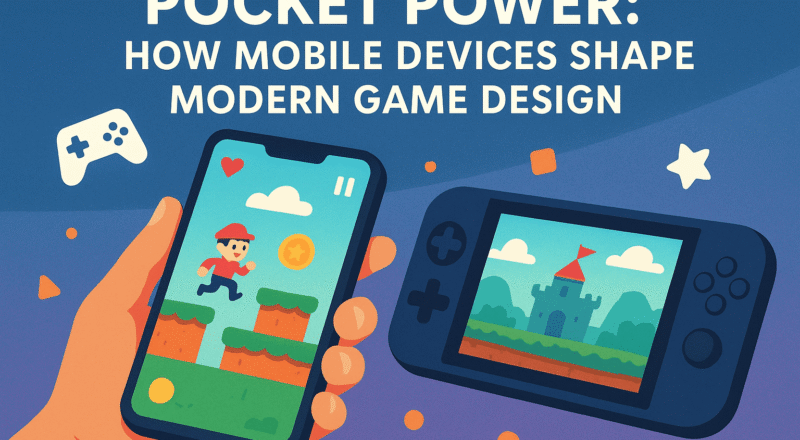Over the last decade, mobile devices have evolved from simple communication tools into powerful gaming platforms capable of delivering rich, immersive experiences. Today’s smartphones rival the capabilities of older consoles, and this shift has dramatically transformed how games are conceived, built, and enjoyed. Modern game design no longer revolves solely around hardware-bound limitations; instead, it embraces flexibility, accessibility, and player-centric mechanics tailored to devices that people carry in their pockets every day.
Industry Leaders and Innovation in 2026
As the mobile gaming landscape grows more competitive, developers increasingly look to the industry’s leading innovators for direction. Analyses of upcoming trends — such as those discussed in overviews of top mobile game development companies in 2026, including insights like those found here: https://medium.com/@thegamedevobserver/top-mobile-game-development-companies-in-2026-883265a88c2c how studios push design boundaries to match rapidly advancing mobile hardware. These companies shape the standards for performance, monetization, and cross-platform integration, demonstrating how game design evolves alongside the technological expectations of modern players.
Designing for Short, Engaging Sessions
One of the most significant aspects of mobile-influenced game design is the prioritization of short, engaging play sessions. Mobile games thrive on accessibility: players often engage during breaks, commutes, or brief idle moments. As a result, many designers focus on tight feedback loops, immediate rewards, and intuitive controls. These structural decisions stem directly from the portable, on-the-go nature of smartphones and tablets, shaping the “snackable gameplay” style now popular across multiple platforms.
Touch Controls and Interface Evolution
Touchscreen-based interaction is another fundamental force shaping modern game design. Instead of relying on physical buttons, developers must consider gestures, taps, swipes, and multi-touch as primary input methods. This shift has led to entirely new genres and demands streamlined UI/UX principles to ensure clarity and comfort. Designers must account for varying screen sizes, finger placement, and natural human motion when crafting interaction systems.
Sensor-Driven Gameplay and Augmented Reality
The rise of advanced mobile sensors has expanded what games can be. Accelerometers, gyroscopes, GPS modules, and cameras power AR experiences, motion-driven mechanics, and location-based adventures. Pokémon GO’s success showed the potential of blending physical and digital worlds, and many studios continue exploring this frontier to create more immersive and context-aware gameplay.
Balancing Power and Optimization
Performance improvements also play an essential role. Today’s mobile chipsets support high-fidelity graphics and large open worlds, but developers must balance these capabilities with battery efficiency, heat management, and memory limitations. This balance influences design choices from early planning stages, requiring efficient rendering, adaptive performance techniques, and well-optimized assets.
Modern Monetization: Designing for Longevity
Monetization strategies have evolved alongside mobile usage habits. Free-to-play models require designers to create systems that sustain long-term engagement without overwhelming players. Cosmetic upgrades, battle passes, timed challenges, and social features all support both revenue and retention, turning micro-engagement psychology into a core element of game design.
Social Integration and Community Growth
Because mobile devices are inherently communication tools, social connectivity naturally integrates into game design. Features like chat, guilds, friend lists, and cooperative modes encourage players to stay engaged and build communities. Social sharing mechanics also help games spread virally, strengthening their presence in highly competitive markets.
Cross-Platform Futures
Cross-platform play has become a major priority. Developers aim to create titles that seamlessly operate across mobile, PC, and console, demanding flexible controls, scalable visuals, and cloud-based progression. This interoperability reflects how mobile gaming has reshaped player expectations, placing portability and convenience at the center of modern gaming culture.
Conclusion: The Expanding Power of Mobile Devices
Ultimately, mobile devices have given players unprecedented freedom over how and where they experience games. This empowerment fuels innovation as developers experiment with new mechanics, genres, and systems. As hardware continues to improve and leading studios push boundaries, “pocket power” will remain the driving force behind the future of game design — ensuring that mobile platforms stay at the heart of the global gaming industry.
